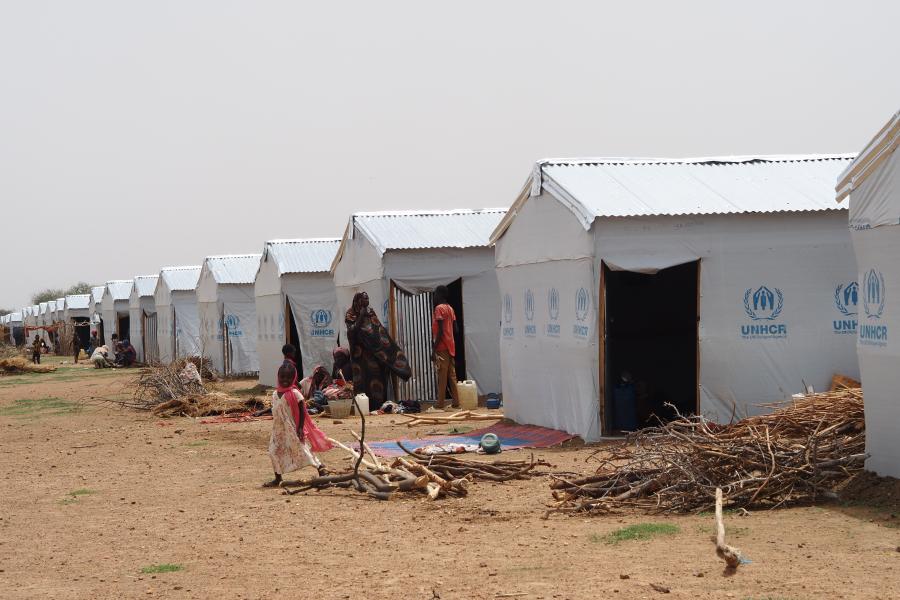Sustainable and safe housing for people fleeing the war in Ukraine – what can the Safe Homes Initiative offer
The document titled “Sustainable and Safe Housing for People Fleeing the War in Ukraine – What Can the Safe Homes Initiative Offer?” outlines strategies and frameworks aimed at providing secure and sustainable housing solutions for individuals displaced by the ongoing conflict in Ukraine. It emphasizes the urgent need for effective housing solutions to address the challenges faced by millions of Ukrainians who have been forced to flee their homes.
Context of the Crisis
Since the onset of the war in Ukraine, over 8 million people have been displaced, with many seeking refuge within Ukraine and across Europe. The report highlights that while immediate shelter needs have been met through temporary accommodations, there is a pressing requirement for long-term housing solutions that ensure safety, dignity, and stability for displaced individuals and families. The document stresses that housing is not merely a physical structure but a critical component of recovery and rebuilding lives.
The Safe Homes Initiative
The Safe Homes Initiative is introduced as a coordinated effort by various stakeholders, including governmental bodies, NGOs, and civil society organizations, to create sustainable housing solutions for Ukrainian refugees. The initiative aims to facilitate access to safe and affordable housing while promoting community integration and resilience.
Objectives of the Initiative
- Support Member States: The initiative seeks to assist EU member states in managing the influx of refugees by providing guidelines and resources for effective housing solutions.
- Promote Private Housing Initiatives: It encourages local authorities and communities to develop private housing initiatives that can accommodate displaced individuals.
- Foster Community Engagement: The initiative emphasizes the importance of community involvement in creating welcoming environments for refugees.
Key Strategies for Implementation
1. Guidelines and Best Practices
The report outlines specific guidelines aimed at helping local authorities implement effective housing solutions. These include:
- Matching Platforms: Developing platforms that connect refugees with available housing options provided by local residents or organizations willing to host them.
- Vetting Processes: Establishing vetting procedures to ensure the safety and suitability of accommodations offered to refugees.
2. Sustainability Focus
Recognizing the limitations of temporary housing arrangements, the initiative advocates for sustainable solutions that consider environmental impacts and long-term viability. This includes:
- Energy-Efficient Housing: Promoting the renovation of existing buildings to meet energy efficiency standards, which can reduce living costs for residents.
- Community Infrastructure: Investing in community facilities such as schools, healthcare centers, and recreational areas that support social integration.
3. Legal Frameworks
The report emphasizes the need for robust legal frameworks that protect the rights of displaced individuals. This includes:
- Tenant Rights: Ensuring that refugees have access to legal protections against eviction and discrimination in housing markets.
- Access to Services: Facilitating access to essential services such as healthcare, education, and employment opportunities for displaced persons.
Challenges Identified
Despite these strategies, several challenges remain in implementing effective safe housing solutions:
- Funding Constraints: Limited financial resources can hinder the development of adequate housing projects.
- Community Fatigue: Initial enthusiasm from host communities may wane over time as they face their own economic pressures.
- Integration Issues: Ensuring that refugees are integrated into local communities requires ongoing support and resources.
Recommendations for Future Actions
The document concludes with several recommendations aimed at enhancing the effectiveness of the Safe Housing Initiative:
- Strengthening Partnerships: Encouraging collaboration among governments, NGOs, and community organizations to pool resources and expertise.
- Monitoring and Evaluation: Implementing systems to monitor the effectiveness of housing initiatives and make adjustments based on feedback from refugees and host communities.
- Long-Term Planning: Developing long-term strategies that go beyond immediate shelter needs to address broader issues related to social integration and economic stability.
Conclusion
The “Sustainable and Safe Housing for People Fleeing the War in Ukraine” report underscores the critical importance of providing secure housing solutions for displaced individuals as part of broader recovery efforts. By focusing on sustainability, community engagement, and legal protections, the Safe Homes Initiative aims to create environments where refugees can rebuild their lives with dignity. The collaborative approach outlined in the document serves as a blueprint for addressing one of the most pressing humanitarian crises of our time while fostering resilience within affected communities.

Further reading: Neighbourhoods of Tomorrow
Housing for Ukraine – Itera itera
Providing safe shelter, community and hope: how collective sites support displaced families in Ukraine – Ukraine | ReliefWeb
National Housing Institute launched in Ukraine to help expand … – UNHCR unhcr

